Dietary Fibre: What is it and why should you care?
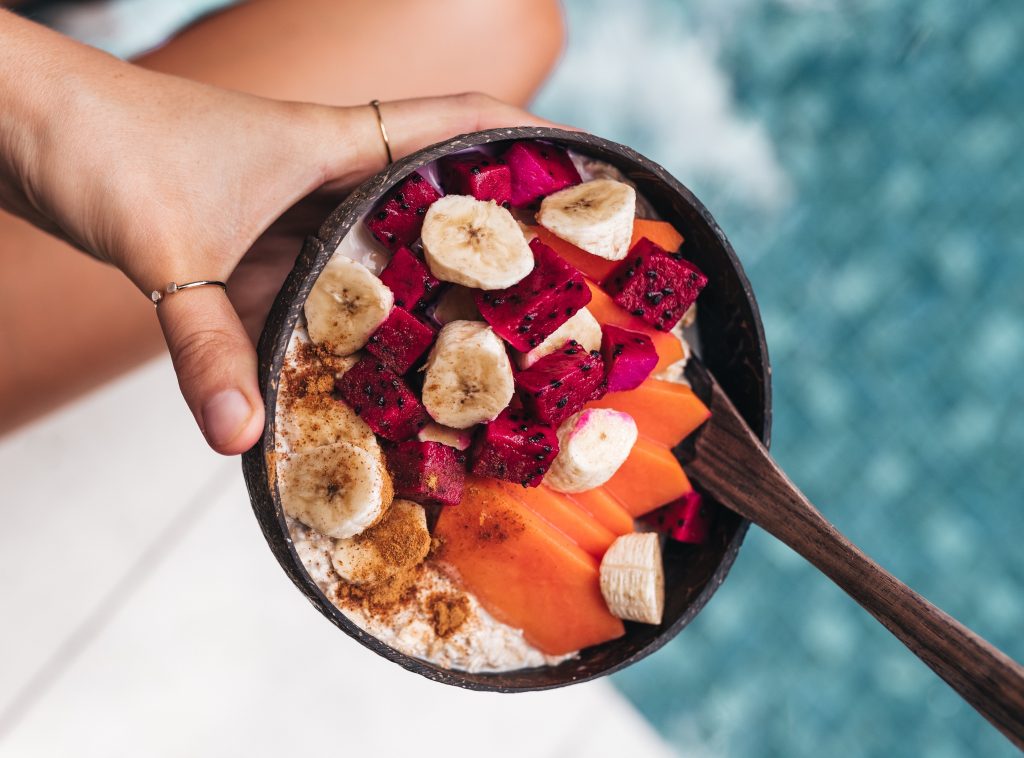
I feel like fibre is often forgotten about but its role in our health is so important.
Normalising my daily fibre intake reduced my IBS symptoms and eating a high fibre diet has been a key ingredient in my weight loss. In this article I’ll break down everything you need to know about fibre. From what it is, where to find it and how it can help you on your weight loss journey.
Table of Contents
What is Fibre?

Fibre (also known as dietary fibre, bulk and roughage) is a type of carbohydrate found in plant based food such as fruit, vegetables, beans, pulses, whole grains, seeds and nuts. Most carbohydrates are broken down to sugar in the body, but fibre is different. Fibre doesn’t provide fuel for your body, instead it helps your body move food through your intestines. It sounds a bit gross but it’s vital for your health.
Eating a diet low in fibre is a bit like driving a car low on oil. You can probably do it, but you won’t get very far.
Why is it important? The Health Benefits of Dietary Fibre
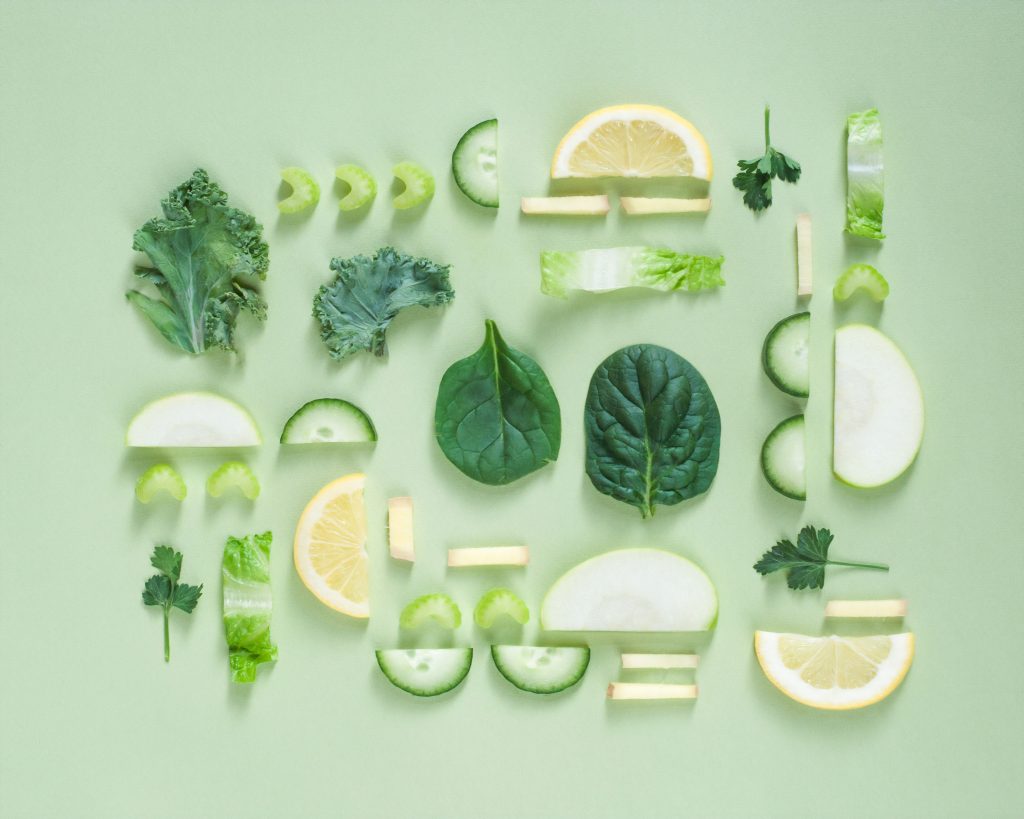
There’s nothing sexy about fibre, but that doesn’t mean it’s not immensely important for our wellbeing.
In fact, according to the NHS (National Health Service of the UK):
“There is strong evidence that eating plenty of fibre (commonly referred to as roughage) is associated with a lower risk of heart disease, stroke, type 2 diabetes and bowel cancer. “
NHS.
5 Health Benefits of Fibre:
1. Fibre reduces constipation as it helps food move more quickly through your digestive system.
2. It normalises bowel function and reduced the risk of IBS, haemorrhoids and related problems.
3. A high fibre diet lowers your risk of developing colon cancer. Food will move faster through your colon, meaning potential carcinogens leave your body quicker.
4. Can reduce blood cholesterol.
5. Prevents blood sugar from spiking.
How fibre can help you lose weight
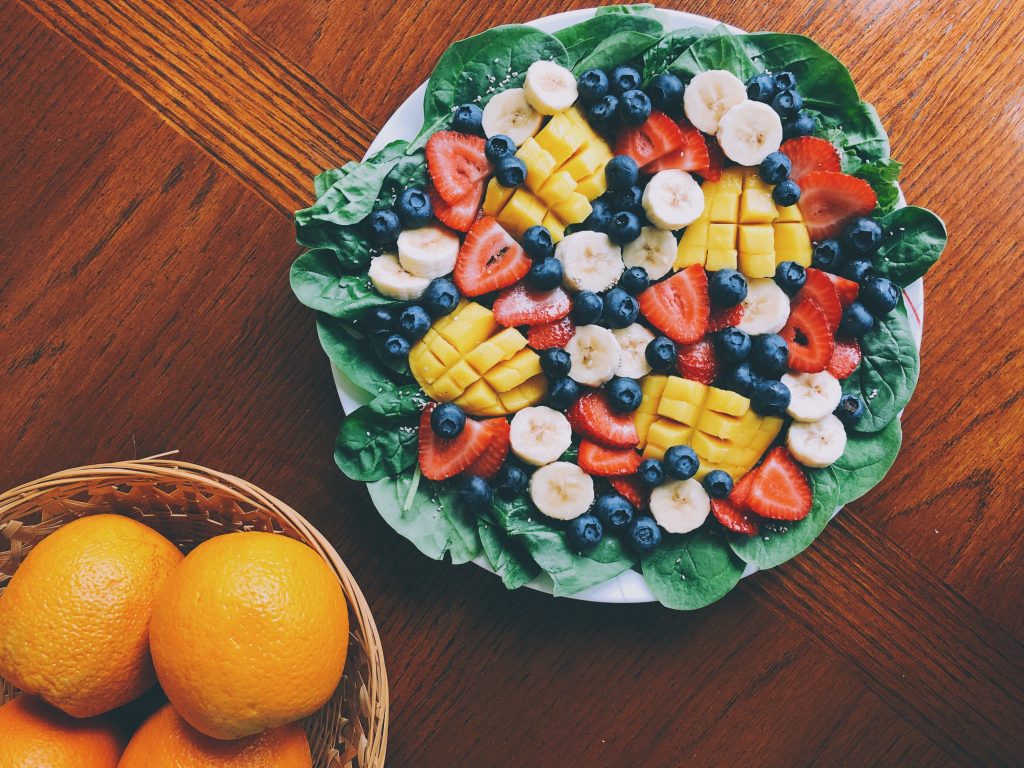
So, by now you know that high fibre foods are good for your health, but did you know that eating a high fibre diet can also help you lose weight?
Here’s why:
1. High fibre foods are more filling
A diet high in fibre is full of high satiety foods. These are foods that make you feel full and are less likely to encourage over eating. These foods generally require more chewing, they are bulky in your stomach meaning you feel full without eating more than you need. Foods such as porridge, dense wholegrain bread and brown rice. Low satiety foods include things like white bread and sweets – these are things you can eat a lot of without ever really feeling full.
2. High fibre foods generally contain less contain less calories per gram
High fibre foods tend to have less calories per gram. This means you can eat more food while still maintaining a calorie deficit. If you’re trying to lose weight this is an effective way to have healthy filling meals that still contribute to your weight loss.
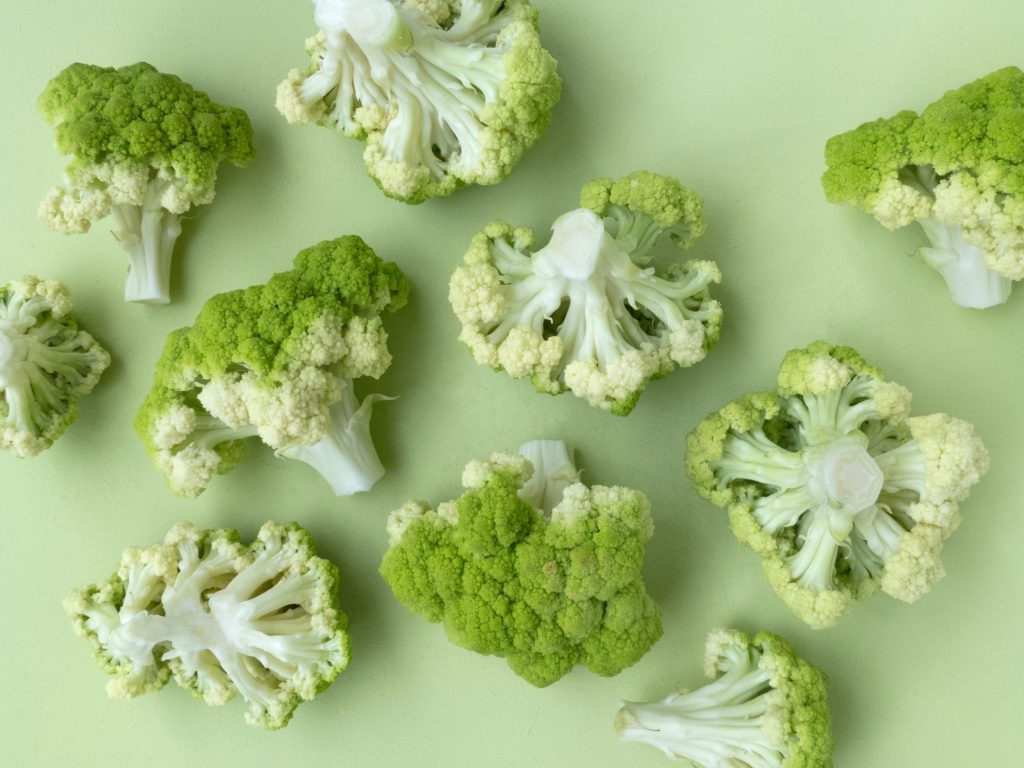
High Fibre Foods: Making it work for you
Let’s take for example:
A meal of wholegrain pasta with a homemade vegetable sauce with protein of choice and side salad VS. a bowl of white pasta with a cream sauce and bacon.
Scenario 1:
A meal of wholegrain pasta with a homemade vegetable sauce with protein of choice and side salad
You munch your way through your salad and then tuck into the bowl of wholegrain pasta with vegetables. This contains less calories per gram, meaning you can enjoy more food, feel full and avoid overeating. Later, you don’t feel like snacking because you’re still satisfied after your dinner. You enjoyed your food and you don’t feel deprived.
If you are trying to lose weight, I find this a much more satisfying approach than cutting your portion sizes.
Scenario 2:
A bowl of white pasta with a cream sauce and bacon.
It’s diet season. You start the war on calories the only way you know how.. by cutting portion sizes. Your big bowl of creamy pasta now resembles something you would feed a three year old child… It tastes great but you get up from the table feeling hungry. Later you tuck into a pile of snacks because you didn’t fill up at dinner time. The result is that you’ve now eaten more calories than you would have if you’d consumed a full portion at dinner. You feel like you’ve failed at another diet. Still hungry and with your self esteem at an all time low, you reach for a beer to drown your sorrows. Tomorrow you will start the cycle again.
Now this is obviously a rather extreme example, but I hope it illustrates for you how helpful high fibre foods can be when designing a diet for weight loss.
I also want to point out that there’s much more to the weight loss story than just eating a diet high in fibre. For instance, high protein foods are also considered to be high satiety foods. If you want to learn more about plant based protein, I have a blog all about it.
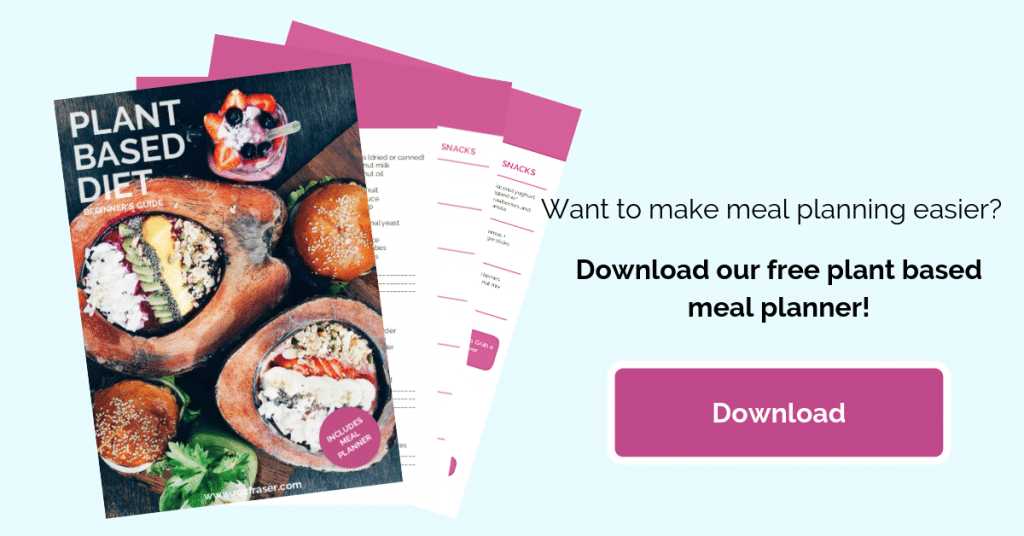
How much dietary fibre do you need?
The general recommendation seems to be about 30g daily for men and women. Despite of this, statistics show that only a small percentage of people are getting that much daily.
Where did I find that number? I didn’t just pick it out of thin air, in fact it’s based on recommendations from The British Nutrition Foundation, The Institute of Medicine (IOM – USA) and a large meta analyses (study of studies) published in the Lancet Journal.
From the above sources, I found the lowest recommended figure for adults was 25g daily with the highest recommendation being 38g (for adult men).
The chart below from the IOM also gives guidelines for children and those over 50.
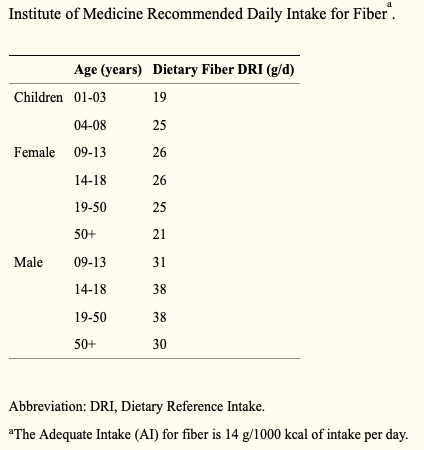
Can you eat too much fibre?
Although this is possible, it’s not at all common. The reality is that only a very small percentage of people eat enough fibre to begin with.
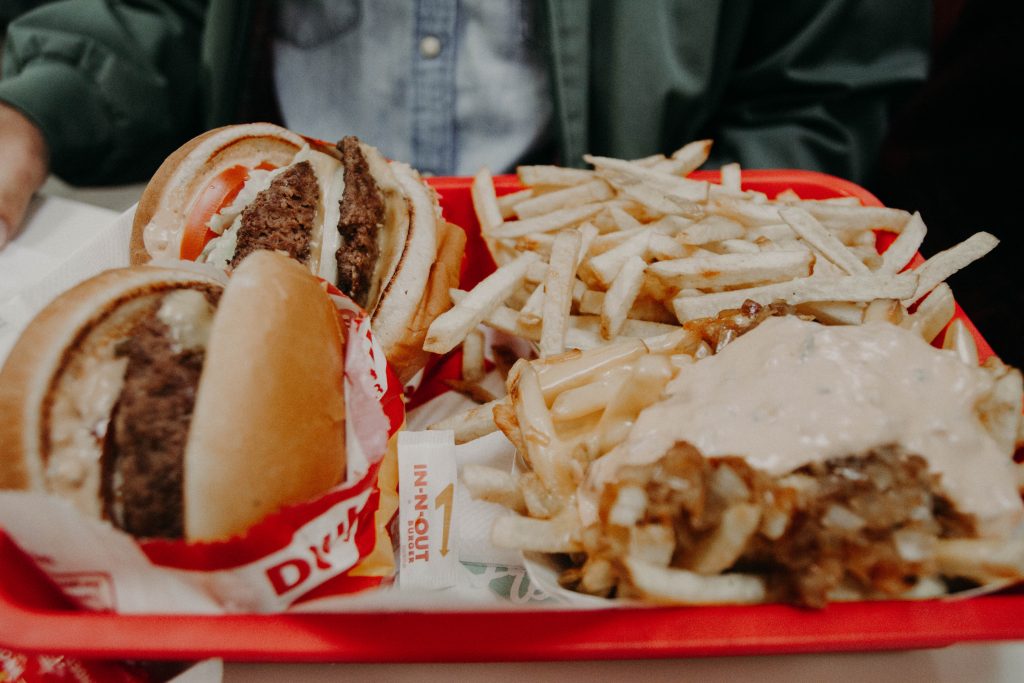
“In general, eating too much fiber is a less common problem than eating too little. Only an estimated 5 percent of Americans meet their daily recommended fiber intake.”
Medical News Today
Medical News Today also notes that eating upwards of 70g of fibre daily can cause digestive upset, although some people experience effects from 40g.
Foods high in dietary fibre
High fibre foods include:
- Fruits
- Vegetables
- Beans, peas and lentils
- Whole grains
- Nuts and seeds
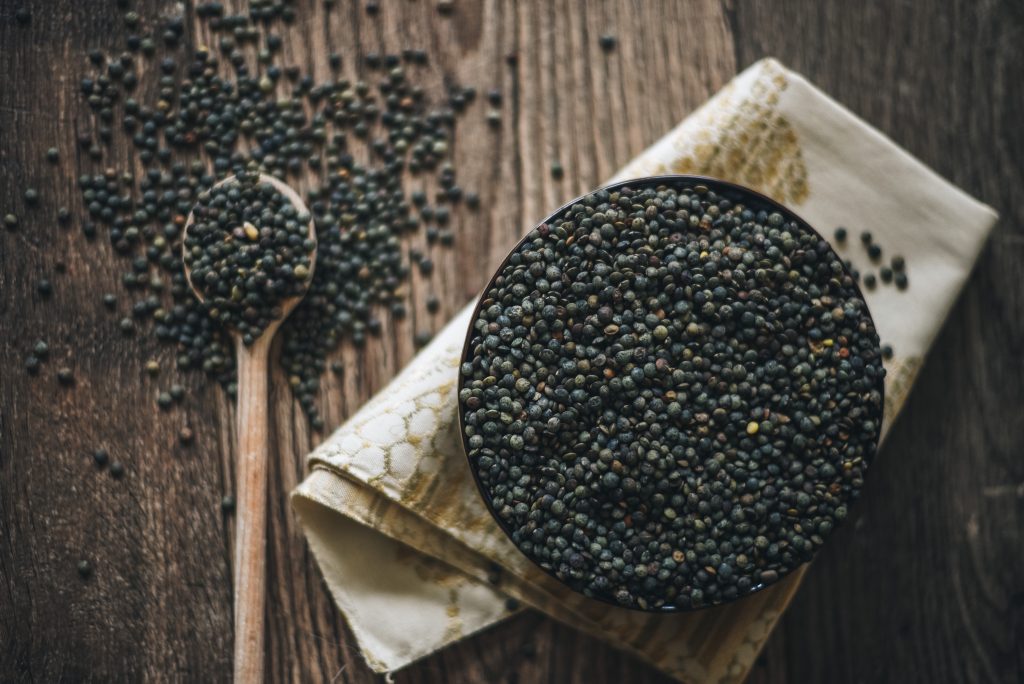
Signs you’re not getting enough fibre
A key indicator you’re not getting enough fibre is that you’re suffering from constipation. “Constipation is generally described as having fewer than three bowel movements a week.” (Mayo Clinic) So if the only time you number 2 is after a night on the beer, you might want to work towards increasing your fibre intake.
Other indicators of a lack of fibre include bloating and IBS.
Finding Dietary Fibre on the Food Labels
How do you know how much fibre is in a packaged food?
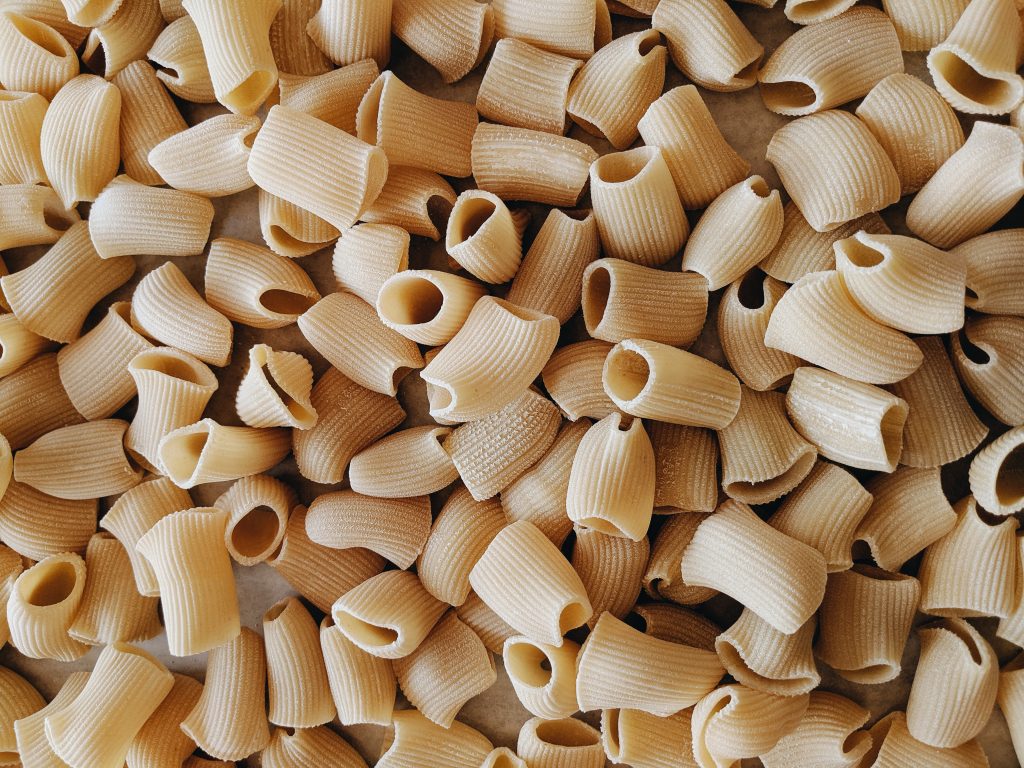
Depending on where you live it may be easier to find out. If you live in the EU, you will find fibre listed separately (normally under carbohydrates). In the USA fibre is listed as part of total carbs.
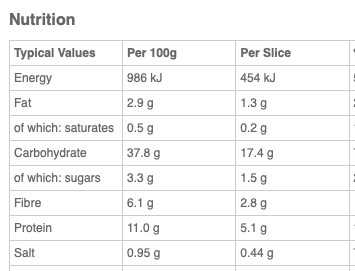
Don’t despair if you don’t find fibre listed on the nutrition label. Taking a look at the ingredients in a product will give you an idea of what to expect.
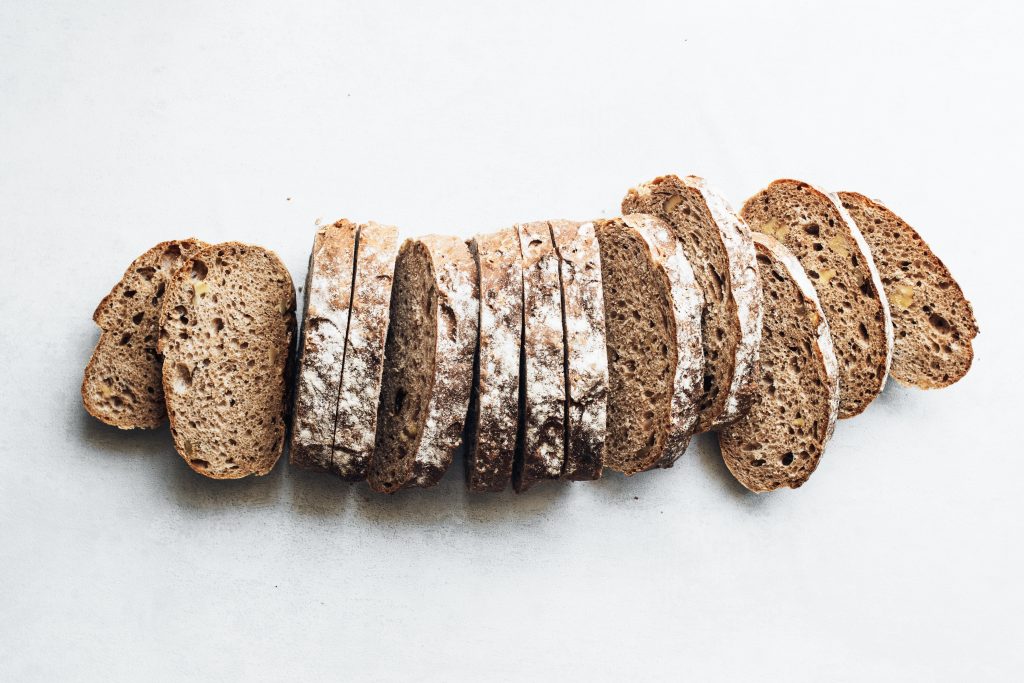
Let’s take bread as an example.
You’re trying to make healthy changes and looking for a bread that is a bit higher in fibre. The name of the bread and the packaging will give you an idea but it’s always a good idea to check the ingredients on the back. Many wholegrain breads are made largely of white flour with a few whole grains added in. These made be a better option than typical white breads but a bread with wholemeal flour high on the ingredient list is guaranteed to be higher in fibre and give you more bang for your buck.

Don’t increase your fibre too quickly.
I can’t stress this enough.
Dramatically increasing your fibre level overnight can lead to digestive upset such as bloating.
Here’s what to do instead: Gradually increase your fibre levels and make sure you drink plenty of water.
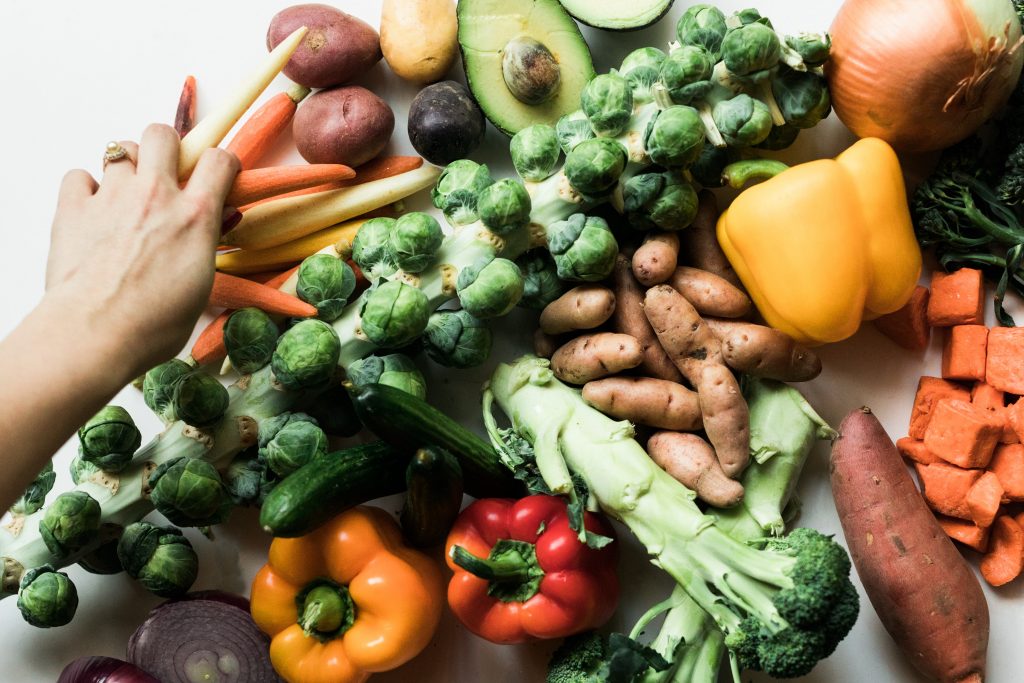
What does that mean? Let’s look at an example:
If your diet currently includes 1-2 servings of veggies daily and only refined carbs, suddenly tucking into 8-10 servings of veggies, wholemeal carbs with every meal plus a bowl of fruit is not going to be pleasant for your digestion. Some people might call this a cleanse. I call it diarrhoea.
Don’t worry. All is not lost.
The key is NOT to change everything overnight. Change to wholegrain bread, add some extra veggies, eat a serving of fruit. Keep making small changes. In just a few short weeks, you’re going to feel a whole lot better.
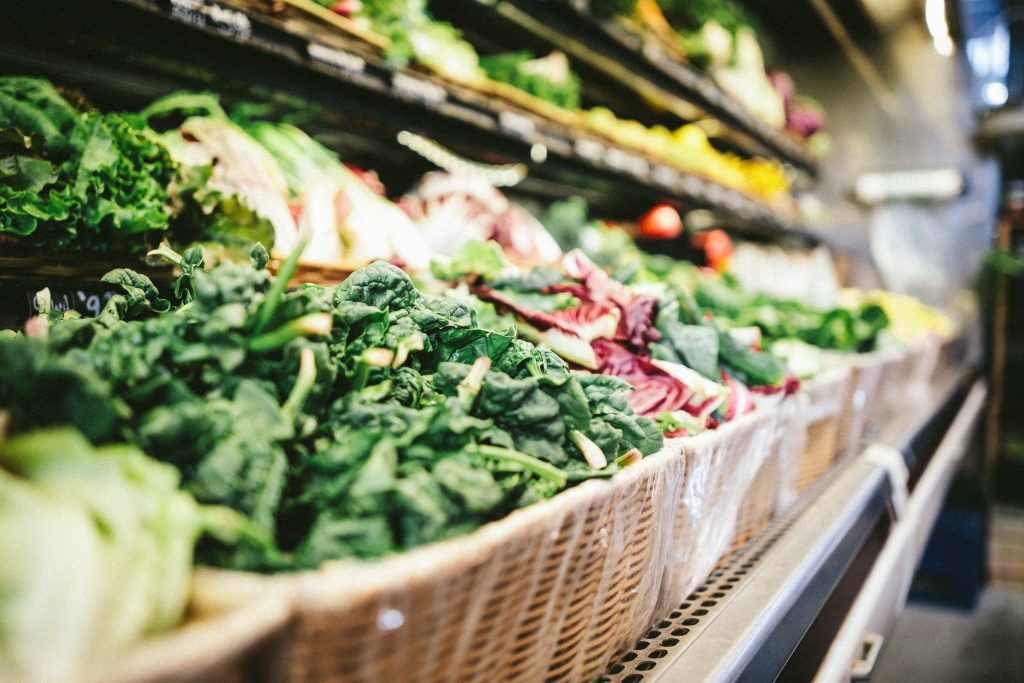
Fibre Supplements
Do you need a fibre supplement?
All the advice says you should be getting your daily fibre intake from real foods.
World Health Organisation
“Eating at least 400 g, or five portions, of fruit and vegetables per day reduces the risk of NCDs (2) and helps to ensure an adequate daily intake of dietary fibre.”
NCDs = Non Communicable Diseases include: diabetes, heart disease, stroke and cancer.
In some cases, a fibre supplement may be recommended by your doctor or health professional.
Wrap Up and Synopsis
- Dietary fibre is a form of carbohydrate which is vital for our health.
- Eating enough fibre reduces constipation, IBS and is associated with a lower levels of certain non-communicable diseases such as colon cancer, type 2 diabetes and heart disease.
- Eating plenty of high fibre foods can help contribute to healthy weight loss because high fibre foods are more filling and generally contain less calories per gram.
- High fibre foods include vegetables, fruit, beans, peas, lentils, nuts and seeds.
- The recommended daily intake for fibre is about 30g a day for most adults, with lower levels for children and those over 50.
- Although it is possible to eat too much fibre, it is uncommon. Shockingly, only 5% of Americans eat enough fibre daily.
- You should aim to reach your daily fibre allowance using real foods.
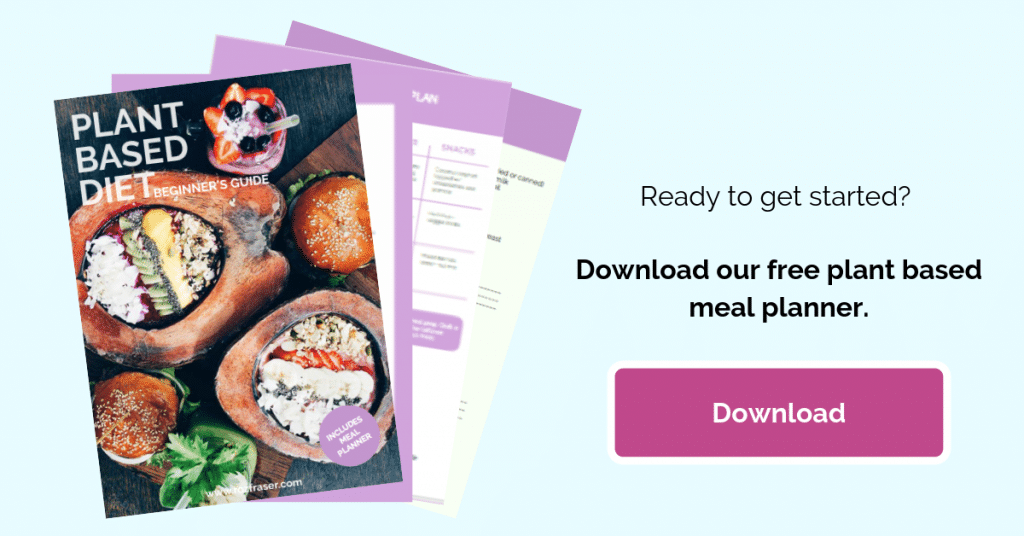
References and Further Reading:
World Health Organisation (WHO). 2020. Healthy Diet Fact Sheet. https://www.who.int/news-room/fact-sheets/detail/healthy-diet
Institute of Medicine. 2005. Dietary Reference Intakes for Energy, Carbohydrate, Fiber, Fat, Fatty Acids, Cholesterol, Protein, and Amino Acids. Washington, DC: The National Academies Press. https://doi.org/10.17226/10490
Quagliani D, Felt-Gunderson P. Closing America’s Fiber Intake Gap: Communication Strategies From a Food and Fiber Summit. Am J Lifestyle Med. 2016;11(1):80-85. Published 2016 Jul 7. https://www.ncbi.nlm.nih.gov/pmc/articles/PMC6124841/
Reynolds A, Mann J, Cummings J, Winter N, Mete E, Te Morenga L. Carbohydrate quality and human health: a series of systematic reviews and meta-analyses [published correction appears in Lancet. 2019 Feb 2;393(10170):406]. Lancet https://pubmed.ncbi.nlm.nih.gov/30638909/